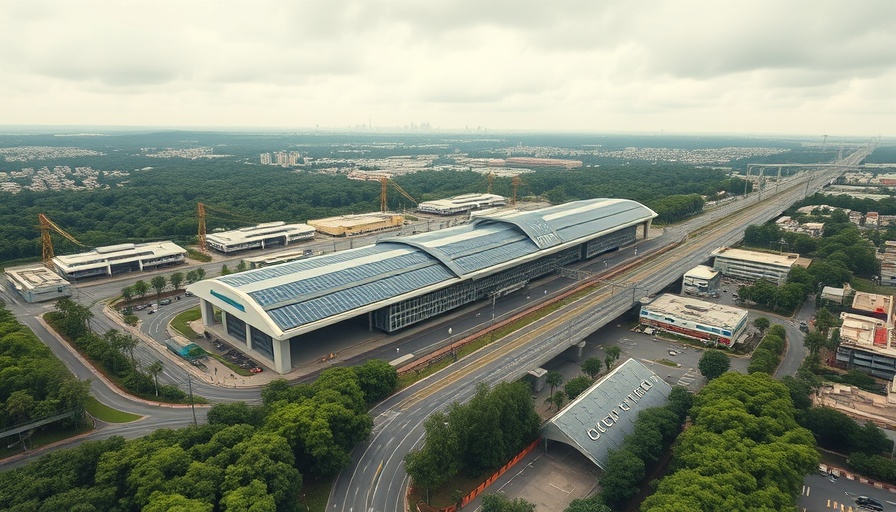
Revolutionizing Landscape Tasks: The Kubota SCL1000 Stand-On Loader
Compact utility loaders have surged in popularity due to their remarkable functionality and ease of use, making them staples in the landscaping and construction industries. The latest model making waves is the Kubota SCL1000. In my hands-on test, this stand-on compact loader showcased its strengths and usability in real-life scenarios, particularly during land clearing and stump removal.
A Closer Look at the Features
The SCL1000 stands out with its narrow 36-inch design and 9.8-inch-wide tracks, enabling it to glide through tight spaces while imparting minimal disturbance to the ground. This compact footprint allows for easy navigation in crowded job sites that often challenge larger machinery. Whether you're an experienced contractor or a DIY enthusiast, the SCL1000 simplifies even the most daunting tasks.
The Operator Experience: Comfort Meets Convenience
Operating the SCL1000 is a breeze, thanks to its ergonomic operator station designed for comfort and efficiency. With features like a passcode-protected keyless ignition and a digital display, users can easily start and manage their tasks without unnecessary hassle. The intuitive T-drive and joystick controls lend themselves well to both novice and experienced operators, ensuring that anyone can handle the equipment with confidence. The cushioned loader boom cylinders and adjustable platform suspension further enhance comfort during prolonged use, which is a significant consideration for contractors and home service providers.
Performance Insights: Ideal for Lighter-Duty Work
Equipped with a 24.8-horsepower engine and capable of delivering 15 gallons per minute of hydraulic flow, the SCL1000 has a rated operating capacity of 1,000 pounds. This makes the loader exceptionally suited for landscaping tasks, such as brush cleanup and grading. For contractors focused on lighter-duty tasks, this capability provides a solid blend of power and precision.
Future Trends in Compact Equipment
As compact loaders gain traction, manufacturers like Kubota are innovating to meet increasing demand. The future looks promising for these machines as they evolve with advanced technology to improve operator experience and efficiency. Expect to see more integrated technologies that will streamline operations, from enhanced attachment options to smarter control systems. For home service contractors, staying informed about these developments could mean the difference between leading in their field or lagging behind.
Whether You're on the Job Site or at Home
The SCL1000's versatility makes it a valuable asset not just for contractors but also for homeowners looking to tackle their landscaping projects. The ease of use, compact size, and effective performance make it ideal for various tasks, from managing small garden plots to addressing larger property needs. Homeowners will find the prospect of renting or purchasing the SCL1000 appealing, especially with its capability to handle numerous attachments, such as trenchers or augers. This adaptability is the hallmark of compact utility loaders as they continue to transform the landscape and home improvement markets.
Final Thoughts: Why Invest in the Kubota SCL1000?
Investing in machines like the Kubota SCL1000 is more than acquiring equipment; it's about creating efficiency in your workflow. Whether you're enhancing your landscaping business or managing DIY projects at home, this compact loader brings tremendous value with its functionality, comfort, and ease of use. Given the burgeoning popularity of compact equipment, now is an opportune moment to explore how the SCL1000 can facilitate your upcoming projects.
For more insightful content on compact utility loaders and other construction equipment, subscribe to our series here at ProHomeGuides. Elevate your business's capabilities today!
 Add Row
Add Row  Add
Add 




Write A Comment